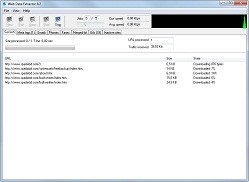

Just be careful not to decode something that’s already decoded or else your script will error out, especially if percents are involved.Īnyways, congrats! Now you know how to get a URL parameter, and hopefully have picked up some other tricks along the way. test // 'a%20space' var decoded = decodeURIComponent (original ) // 'a space' If your URL has any encoded special characters like spaces (encoded as %20), you can also decode them to get the original value like this: // assume a url parameter of test=a%20space var original = getAllUrlParams ( ). log (value ) // shirt, blue,, m for ( const entry of entries ) įinally, we return our object with the parameters and values. log (key ) // product, color, newuser, size for ( const value of values ) console. Parsing the data to extract the exact information that we want from the data.

Getting the data using request libraries and a headless browser. There are mainly two parts to web scraping.

You are going to learn to write web scrapers in JavaScript. entries ( ) for ( const key of keys ) console. The program which extracts the data from websites is called a web scraper. URLSearchParams also provides some familiar Object iterator methods, allowing you iterate over its keys, values and entries: constĮntries = urlParams. getAll ( 'size' ) ) // Iterating over Parameters getAll ( 'size' ) ) // //Programmatically add a second size parameter. You can use URLSearchParams.getAll() to return all of the values associated with a particular parameter: console. has ( 'paymentmethod' ) ) // false Getting All of a Parameter’s Values You can use URLSearchParams.has() to check whether a certain parameter exists: console. Other Useful Methods Checking for the Presence of a Parameter


 0 kommentar(er)
0 kommentar(er)
